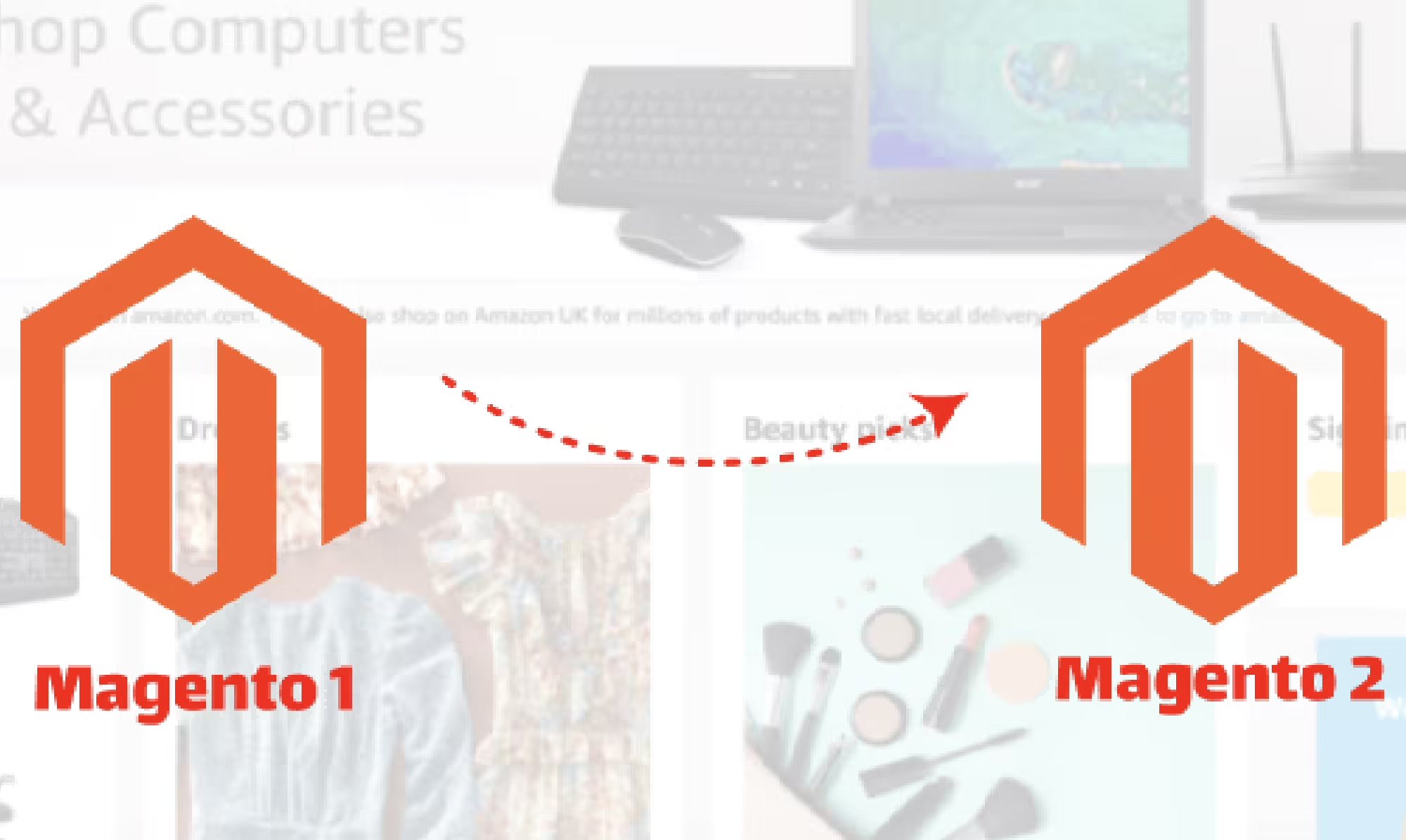
Still, 21,000+ websites are live and running on Magento 1.9, as per the report. And we don't even want to get those total numbers for Magento 1! It scares us. It's been years since the sunset for Magento 1, and it's like, okay, I have a website that earns me gold, so why bother for diamonds? This article is dedicated to those still on the edge and needing more in-depth knowledge of Magento 1 to Magento 2 migration. Yes, a comprehensive guide might feel like, oh, I know this, but it is a gem to help you decide. If you are still on Magento 1, this is the time to sky-high and scale your Magento website with Magento 2 migration.
So, let's get the ball rolling.
Table of Contents
Plan Magento 2 migration
Timing the launch of your migration is critical to avoid delays or unnecessary risks. Exclude your peak season from the migration timeline and work backward to create a reasonable timeline. The migration process takes 3-7 months, depending on extensions, additions, and functionalities. Count back at least five months from your launch date to determine the start date for your migration. Once you have your launch date set, you are ready to begin the first step of your migration.
Review your existing Maganto1 theme
Built on an entirely new architecture, Magento 2 is completely different from Magento 1, and that's where you need to review your existing M1 theme. If you use a third-party theme, ensure the vendor provides an M2 compatible theme too! Or use Luma, the native theme of Magento 2. You can adopt Luma as your base theme and create your branding by customizing the style guide per your needs. Even for more advancement to your M2 store, you can install the Magento 2 Hyvä theme. It is a new Magento 2 storefront solution for better speed and performance.
Question or Checklist to ask yourself at this stage:
- What features are never used or may be confusing my customers?
- Where am I losing customers in the customer sales journey?
- How are my customers searching for products?
- What information do my customers want to see on product pages?
- How do customers use filters to view products?
- What are your key Unique Selling Propositions (USPs), and are they being displayed effectively?
- What do you like about your Magento store?
- What do you wish you could change?
- What new features do you want to add?
Scan your Magento 1 extension and custom code
Take time to evaluate your extensions by asking questions like Which ones are you using? Which ones are outdated or no longer functional? Which ones are affecting performance? As Magento 2 is more advanced compared to Magento 1, many extensions can be replaced with native Magento 2 features. To simplify future upgrades, install only the extensions required for your business to reduce third-party dependency.
Review and examine the custom code
Custom code written for Magento 1 may be compatible with Magento 2, but additional coding may be required due to structural differences. Our Magento-certified developers can help determine compatibility and write additional code if needed.
Check 3rd Party System integrations
It is crucial to identify your third-party system integrations, including your order management system (OMS), customer relationship management (CRM), enterprise resource planning (ERP), point-of-sale (POS), and third-party logistics (3PL). These systems hold important data, and proper integration with your eCommerce platform is critical to maintaining a user-friendly website and ensuring efficient back-end operations.
Integration is vital to shipping the right items and meeting guaranteed delivery dates. It also gives you more control over new promotions or flash sales while keeping your data synced for accounting purposes. Thus, you can resolve any inventory issues and avoid overselling.
Most importantly, integrating these systems can save your team time and allow you to concentrate on growth strategies instead of finding workarounds.
Checklist to make sure of System Integration
Before moving to the next step in your migration, make sure you answer these questions:
- What systems does my site need to integrate with?
- What data flows do I want to automate between my systems?
- Can I leverage my existing connectors to connect with Magento 2?
- Do I need to add any new functionality via integration to improve business operations or customer experience?
When evaluating your eCommerce integration needs, consult your Magento agency for recommendations and best practices. Magento can easily integrate with nearly any third-party integration. Take the time to create a list with your development team or agency to ensure all third-party systems and Magento integrations are accounted for. If some are overlooked or ignored, your overall customer experience can be compromised.
Data Migration Stage
The last step in your Magento migration is to move your Magento 1 data, including customers, orders, products, category configurations, and settings, to Magento 2. Please keep in mind this data migration is a time-intensive process. It's not a simple CSV export from Magento 1 and then import into Magento 2. There are multiple steps. Massive amounts of data being are being inputted and mapped. In addition, intense A/B testing is performed to ensure a smooth transition and that your new store functions correctly.
At every stage, extreme care is used to ensure that your data is not compromised by any conflict on Magento 2.
The process of migrating your data usually involves five steps.
- The Magento 1 database is cleaned up by:
- Discarding of unused customer, order, or product attributes.
- Fixing database issues
- Attributes must then be mapped to be migrated, taking into account extra tables that have a direct relation to customers (e.g., Wishlist), catalog (e.g., reviews) and sales (e.g., invoices).
- A successful migration has been completed, and customers now have access to their information.
- After every necessary extension from Magento 1 (that directly affects customer, catalog, or sales information) is installed in Magento 2, the data needs to be migrated again by including and mapping those attributes.
- A delta process is then set to keep the information up to date.
- The final migration is done once more before the site is launched.
Customer Migration
Customer migration allows your customers to log into the new site and still have all their account information and passwords already saved – allowing for a seamless transition. To ensure all customer data is migrated intact, we:
- Verify consistency between the database structures (tables and fields) of Magento 1 and 2.
- Track the data migration status and create log files. Executes data verification tests.
Catalog Migration
Catalog migration will pull all the product information and images into the new site. The complete category tree is migrated to Magento 2 and then reviewed to ensure it matches the tree from your previous site.
All product information is migrated to the new platform, including:
- Product name
- Product Description Categories the products belong to
- Prices/special prices Images (including thumbnails and swatches)
Order Migration
Order migration allows your admin and customers to see all previous orders as well as orders that need to be fulfilled. All orders are matched with their corresponding customer.
CMS Migration
The final phase of your data migration is to move all CMS pages and CMS blocks from Magento 1 to Magento 2.
This is typically done in the following steps:
- The Magento 1 database is cleaned up. This includes the removal of any unused or inactive CMS pages and blocks.
- A clean migration of blocks, pages, and widgets is performed.
- Because Magento 1 and Magento 2 have a different XML format for layout, any CMS content with custom layout updates must be fixed manually.
- The final migration is done again before the site is launched.
Testing & Launch
The final step of your migration is a thorough QA process culminating with the launch of your site.
- Internal QA: After completing the migration, we conduct a final quality assurance test on the entire site. The latest version of major browsers is used to ensure a consistent look across all browsers.
- Testing and QA: Performed on Windows and Mac desktops and across multiple devices, including the most current Apple and Samsung devices to ensure your site displays accurately and performs flawlessly in every device with full responsiveness.
- Client QA: Before launching your website, you will have ample time to test and review it to ensure it has all the desired features and functions.
- Client sign-off: Once you give us the green light, we can proceed with selecting a date to launch. As a standard practice, we avoid launching on Fridays as any issues that arise during the weekend would have to wait until Monday to be resolved. Similarly, we avoid Mondays due to the higher internal workload after the weekend. Our preferred launch days are Tuesdays or Wednesdays.
New Functionality
Migrating is the perfect time to introduce new functionality. Your store will need to be rebuilt on the new Magento platform. That's a good thing. It's a rare opportunity to take stock of your current website and add the functionality you've always wanted. Take advantage of it. Review your wish list of site features. Look at your competitor's sites to get ideas for new functionality.
Search Engine Optimization in Magento Migration
Migration can impact SEO. If new URLs matching old URLs are not directed to the new pages, you could lose ranking.
Magento 2 is SEO-friendly and gives you the ability to:
- Automatically generate a Google sitemap. Create search engine-friendly URLs
- Take complete control of URLs with URL rewrites
- Enable detailed search results by automatically adding structured data markup to product pages
HOSTING
Although often overlooked, hosting is critical when migrating to Magento 2. While your hosting provider may have served you well on your Magento 1 website, a Magento 2 website has an entirely different set of technical requirements. As a best practice, it’s recommended to rethink and revise your Magento hosting account with a hosting provider specializing in Magento 2.
Next Move?
With extensive experience working on multiple Magento website development projects and providing complex solutions, we can help you with your Magento 2 migration needs. Get on a call now with a 30-minute free consultation! Our team includes experienced and certified Magento developers, designers, testers, and business solution analysts who add value to our services.

